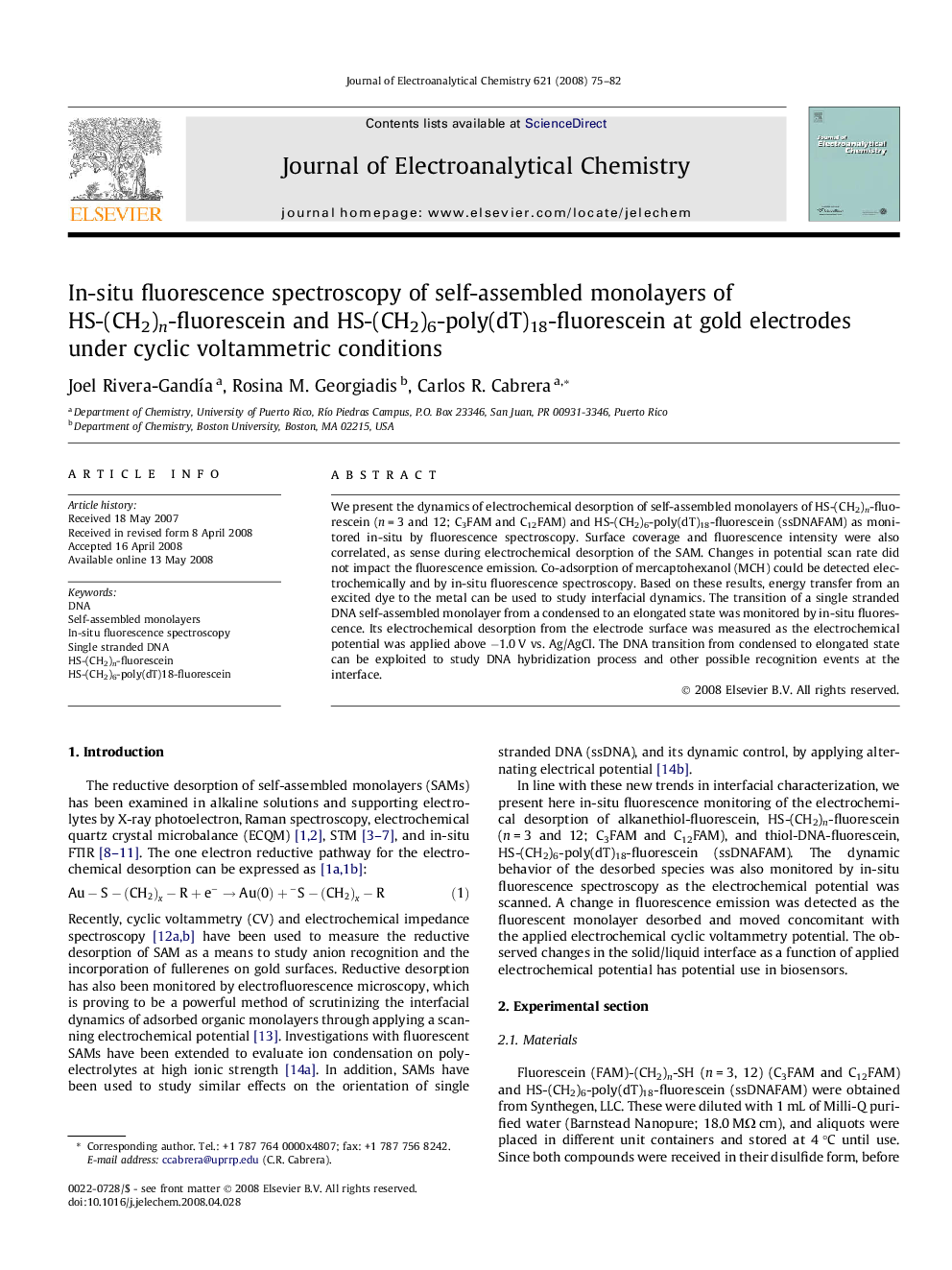| Article ID | Journal | Published Year | Pages | File Type |
|---|---|---|---|---|
| 220472 | Journal of Electroanalytical Chemistry | 2008 | 8 Pages |
We present the dynamics of electrochemical desorption of self-assembled monolayers of HS-(CH2)n-fluorescein (n = 3 and 12; C3FAM and C12FAM) and HS-(CH2)6-poly(dT)18-fluorescein (ssDNAFAM) as monitored in-situ by fluorescence spectroscopy. Surface coverage and fluorescence intensity were also correlated, as sense during electrochemical desorption of the SAM. Changes in potential scan rate did not impact the fluorescence emission. Co-adsorption of mercaptohexanol (MCH) could be detected electrochemically and by in-situ fluorescence spectroscopy. Based on these results, energy transfer from an excited dye to the metal can be used to study interfacial dynamics. The transition of a single stranded DNA self-assembled monolayer from a condensed to an elongated state was monitored by in-situ fluorescence. Its electrochemical desorption from the electrode surface was measured as the electrochemical potential was applied above −1.0 V vs. Ag/AgCl. The DNA transition from condensed to elongated state can be exploited to study DNA hybridization process and other possible recognition events at the interface.
